| Weight | 1 lbs |
|---|---|
| Dimensions | 9 × 5 × 2 in |
| host | mouse |
| isotype | IgG |
| clonality | monoclonal |
| concentration | concentrate, predilute |
| applications | IHC |
| reactivity | human |
| available size | 0.1 mL, 0.5 mL, 1 mL concentrated, 7 mL prediluted |
rabbit anti-MSH-6 monoclonal antibody (ZR342) 6263
Price range: $160.00 through $528.00
Antibody summary
- Rabbit monoclonal to MSH-6
- Suitable for: Immunohistochemistry (formalin-fixed, paraffin-embedded tissues)
- Reacts with: Human
- Isotype:IgG
- Control: Colon carcinoma
- Visualization: Nuclear
- 0.1, 0.5, 1.0 mL concentrated, 7 mL prediluted
rabbit anti-MSH-6 monoclonal antibody ZR342 6263
| target relevance |
|---|
| Protein names DNA mismatch repair protein Msh6 (hMSH6) (G/T mismatch-binding protein) (GTBP) (GTMBP) (MutS protein homolog 6) (MutS-alpha 160 kDa subunit) (p160) |
| Gene names MSH6,MSH6 GTBP |
| Protein family DNA mismatch repair MutS family |
| Mass 152786Da |
| Function FUNCTION: Component of the post-replicative DNA mismatch repair system (MMR). Heterodimerizes with MSH2 to form MutS alpha, which binds to DNA mismatches thereby initiating DNA repair. When bound, MutS alpha bends the DNA helix and shields approximately 20 base pairs, and recognizes single base mismatches and dinucleotide insertion-deletion loops (IDL) in the DNA. After mismatch binding, forms a ternary complex with the MutL alpha heterodimer, which is thought to be responsible for directing the downstream MMR events, including strand discrimination, excision, and resynthesis. ATP binding and hydrolysis play a pivotal role in mismatch repair functions. The ATPase activity associated with MutS alpha regulates binding similar to a molecular switch: mismatched DNA provokes ADP-->ATP exchange, resulting in a discernible conformational transition that converts MutS alpha into a sliding clamp capable of hydrolysis-independent diffusion along the DNA backbone. This transition is crucial for mismatch repair. MutS alpha may also play a role in DNA homologous recombination repair. Recruited on chromatin in G1 and early S phase via its PWWP domain that specifically binds trimethylated 'Lys-36' of histone H3 (H3K36me3): early recruitment to chromatin to be replicated allowing a quick identification of mismatch repair to initiate the DNA mismatch repair reaction. {ECO:0000269|PubMed:10078208, ECO:0000269|PubMed:10660545, ECO:0000269|PubMed:15064730, ECO:0000269|PubMed:21120944, ECO:0000269|PubMed:23622243, ECO:0000269|PubMed:9564049, ECO:0000269|PubMed:9822679, ECO:0000269|PubMed:9822680}. |
| Subellular location SUBCELLULAR LOCATION: Nucleus {ECO:0000269|PubMed:23622243}. Chromosome {ECO:0000269|PubMed:23622243}. Note=Associates with H3K36me3 via its PWWP domain. |
| Structure SUBUNIT: Component of the DNA mismatch repair (MMR) complex composed at least of MSH2, MSH3, MSH6, PMS1 and MLH1 (PubMed:26300262). Heterodimer consisting of MSH2-MSH6 (MutS alpha) (PubMed:7604264, PubMed:8942985). Forms a ternary complex with MutL alpha (MLH1-PMS1). Interacts with MCM9 (PubMed:26300262). Part of the BRCA1-associated genome surveillance complex (BASC), which contains BRCA1, MSH2, MSH6, MLH1, ATM, BLM, PMS2 and the RAD50-MRE11-NBS1 protein complex (PubMed:10783165). This association could be a dynamic process changing throughout the cell cycle and within subnuclear domains (PubMed:10783165). {ECO:0000269|PubMed:10783165, ECO:0000269|PubMed:26300262, ECO:0000269|PubMed:7604264, ECO:0000269|PubMed:8942985}.; SUBUNIT: (Microbial infection) Interacts with herpes simplex virus 1 protein UL12. {ECO:0000269|PubMed:21957315}. |
| Post-translational modification PTM: The N-terminus is blocked.; PTM: Phosphorylated by PRKCZ, which may prevent MutS alpha degradation by the ubiquitin-proteasome pathway. {ECO:0000269|PubMed:15808853}. |
| Domain DOMAIN: The PWWP domain specifically recognizes and binds trimethylated 'Lys-36' of histone H3 (H3K36me3). {ECO:0000269|PubMed:23622243}. |
| Involvement in disease DISEASE: Lynch syndrome 5 (LYNCH5) [MIM:614350]: A form of Lynch syndrome, an autosomal dominant disease associated with marked increase in cancer susceptibility. It is characterized by a familial predisposition to early-onset colorectal carcinoma (CRC) and extra-colonic tumors of the gastrointestinal, urological and female reproductive tracts. Lynch syndrome is reported to be the most common form of inherited colorectal cancer in the Western world. Clinically, it is often divided into two subgroups. Type I is characterized by hereditary predisposition to colorectal cancer, a young age of onset, and carcinoma observed in the proximal colon. Type II is characterized by increased risk for cancers in certain tissues such as the uterus, ovary, breast, stomach, small intestine, skin, and larynx in addition to the colon. Diagnosis of classical Lynch syndrome is based on the Amsterdam criteria: 3 or more relatives affected by colorectal cancer, one a first degree relative of the other two; 2 or more generation affected; 1 or more colorectal cancers presenting before 50 years of age; exclusion of hereditary polyposis syndromes. The term 'suspected Lynch syndrome' or 'incomplete Lynch syndrome' can be used to describe families who do not or only partially fulfill the Amsterdam criteria, but in whom a genetic basis for colon cancer is strongly suspected. {ECO:0000269|PubMed:10480359, ECO:0000269|PubMed:10521294, ECO:0000269|PubMed:11586295, ECO:0000269|PubMed:12658575, ECO:0000269|PubMed:14974087, ECO:0000269|PubMed:15365995, ECO:0000269|PubMed:21120944, ECO:0000269|PubMed:22102614, ECO:0000269|PubMed:9354786}. Note=The disease is caused by variants affecting the gene represented in this entry.; DISEASE: Endometrial cancer (ENDMC) [MIM:608089]: A malignancy of endometrium, the mucous lining of the uterus. Most endometrial cancers are adenocarcinomas, cancers that begin in cells that make and release mucus and other fluids. {ECO:0000269|PubMed:11153917, ECO:0000269|PubMed:14961575}. Note=Disease susceptibility is associated with variants affecting the gene represented in this entry.; DISEASE: Mismatch repair cancer syndrome 3 (MMRCS3) [MIM:619097]: An autosomal recessive form of mismatch repair cancer syndrome, a childhood cancer predisposition syndrome encompassing a broad tumor spectrum. This includes hematological malignancies, central nervous system tumors, Lynch syndrome-associated malignancies such as colorectal tumors as well as multiple intestinal polyps, embryonic tumors and rhabdomyosarcoma. Multiple cafe-au-lait macules, a feature reminiscent of neurofibromatosis type 1, are often found as first manifestation of the underlying cancer. {ECO:0000269|PubMed:17557300}. Note=The disease is caused by variants affecting the gene represented in this entry.; DISEASE: Colorectal cancer (CRC) [MIM:114500]: A complex disease characterized by malignant lesions arising from the inner wall of the large intestine (the colon) and the rectum. Genetic alterations are often associated with progression from premalignant lesion (adenoma) to invasive adenocarcinoma. Risk factors for cancer of the colon and rectum include colon polyps, long-standing ulcerative colitis, and genetic family history. {ECO:0000269|PubMed:10413423, ECO:0000269|PubMed:10537275, ECO:0000269|PubMed:10699937, ECO:0000269|PubMed:11153917, ECO:0000269|PubMed:11470537, ECO:0000269|PubMed:11709755, ECO:0000269|PubMed:11807791, ECO:0000269|PubMed:12522549, ECO:0000269|PubMed:14520694, ECO:0000269|PubMed:14961575, ECO:0000269|PubMed:15483016, ECO:0000269|PubMed:22102614}. Note=Disease susceptibility is associated with variants affecting the gene represented in this entry. |
| Target Relevance information above includes information from UniProt accession: P52701 |
| The UniProt Consortium |
Data
Publications
| pmid | title | authors | citation |
|---|---|---|---|
| We haven't added any publications to our database yet. | |||
Protocols
| relevant to this product |
|---|
| IHC |
Documents
| # | SDS | Certificate | |
|---|---|---|---|
| Please enter your product and batch number here to retrieve product datasheet, SDS, and QC information. | |||
Only logged in customers who have purchased this product may leave a review.
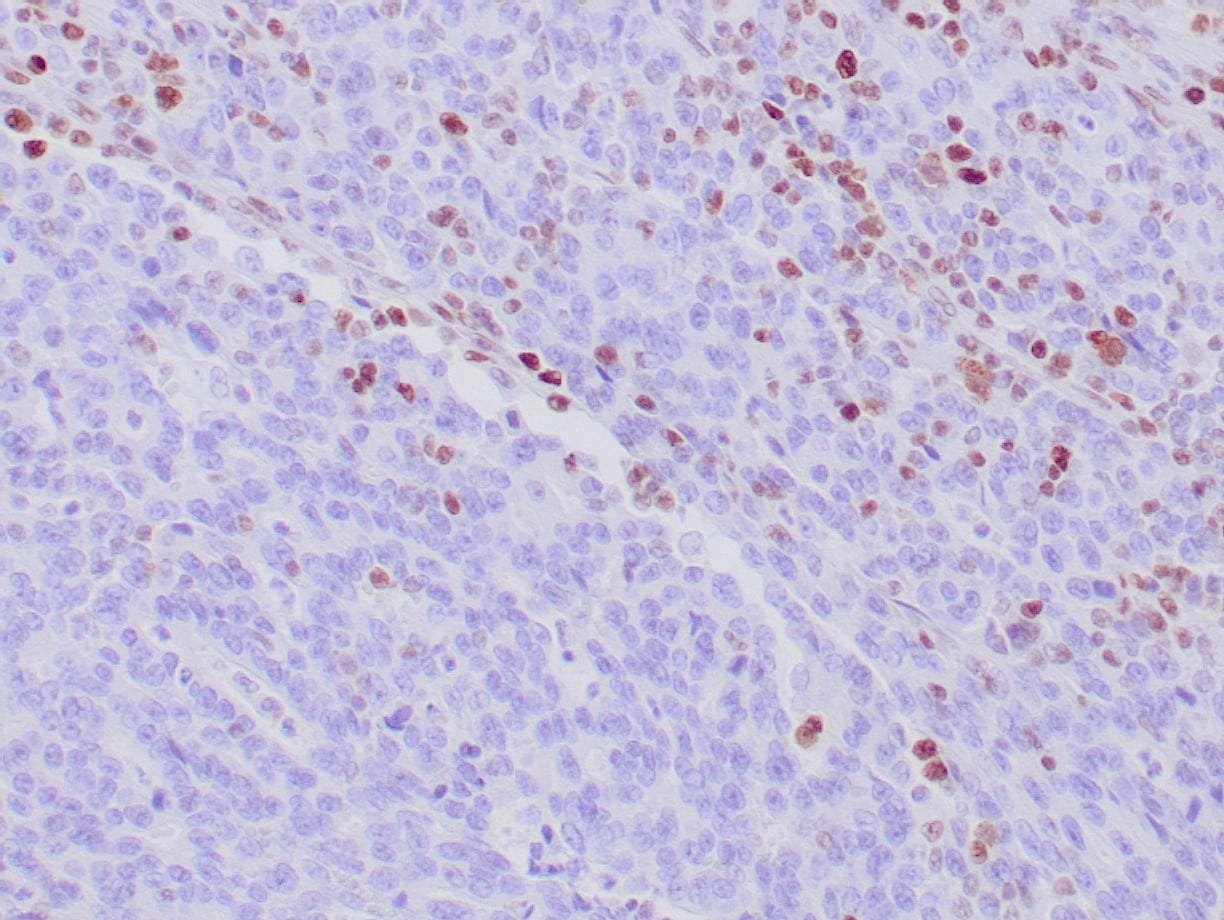
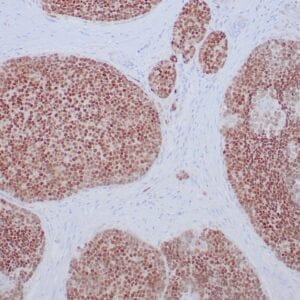
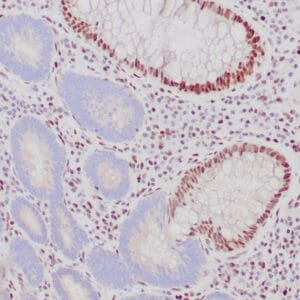

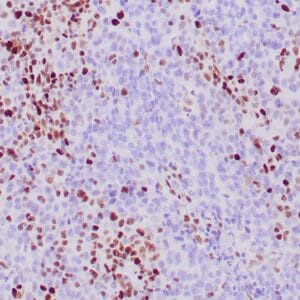
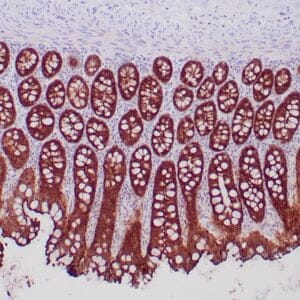



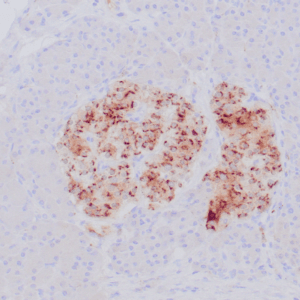
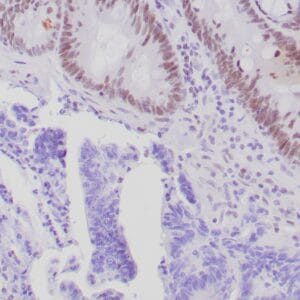


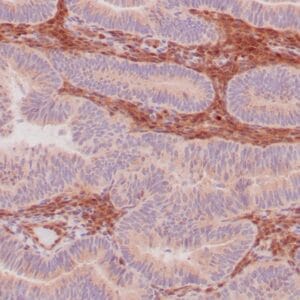


Reviews
There are no reviews yet.